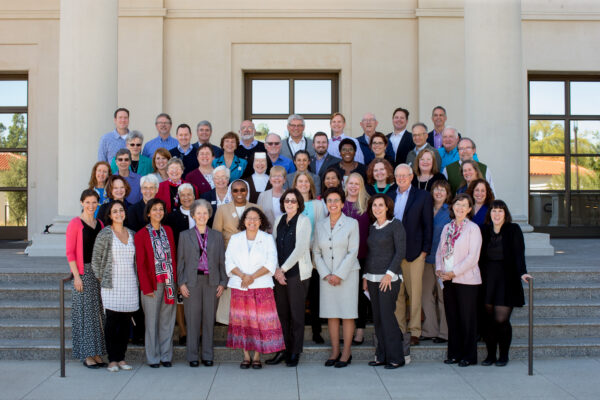This post originally appeared on the Conrad N. Hilton Foundation’s website. CRCC serves as the Monitoring, Evaluation and Learning partner for the Hilton Foundation’s Catholic Sisters Initiative. Click here to see CRCC’s first-year report on the initiative.
From November 4-7, 2015, we convened the grantee-partners of the Catholic Sisters Initiative who had received grants from the Foundation in 2013 (when the strategy was approved by the Board) and 2014.
This was our first effort to convene this particular group of partners, and so rather than bring in external voices, we framed the three-days as an opportunity to connect with and learn from one another. Working collaboratively with our Monitoring, Evaluation and Learning partner, the Center for Religion and Civic Culture at the University of Southern California, we opened with a fresh take on our strategy, offering participants an account of what we are trying to accomplish and why.
The activities that we support through the Catholic Sisters Initiative fall into four broad scenes of audiences and levels of engagement:
- Next Generation: Nurturing the call to become a Catholic sister and mobilizing networks of resources and expertise that congregations need to flourish
- Strong Leaders: Building the networks responsible for the education and formation of sisters, helping them to become bold agents of social change
- Smart Partnerships: Helping sisters exercise leadership to advance human development more widely and effectively through strategic collaborations
- New Messengers: Enhancing the capacity of the storytellers and researchers who “wake up the world” to the value of Catholic sisters in the church and society
While many grantees had some understanding of their place in the “big picture,” for many it was their first time seeing themselves as part of a broader agenda of building a global sisterhood that serves as a vital member of the global partnership for human development.
 Sister Reina Perea of the Dominican Sisters of Mission San Jose, representing the Sisters Leadership Development Initiative in Mexico, and Sister Gemma Simmonds of the Congregation of Jesus, Director of the Religious Life Institute, Heythrop College, University of London.
Sister Reina Perea of the Dominican Sisters of Mission San Jose, representing the Sisters Leadership Development Initiative in Mexico, and Sister Gemma Simmonds of the Congregation of Jesus, Director of the Religious Life Institute, Heythrop College, University of London.
On the first day, we encouraged our grantees to visualize themselves in one of these four broad ‘scenes’ and then to organize themselves into small communities of practice. Swiftly our grantees began to see themselves the way we see them, which was not necessarily the way they had seen themselves. This exercise served as a productive way to surface misunderstandings that could potentially undermine our work together. In my experience, grants can begin to sour when grantee objectives (“What you care about”) and grantor objectives (“What we care about”) get out of alignment. Grantees often have a number of objectives that are very important to them, but are of lesser importance to us, and vice versa. Of course, when grants are first made, everyone has the best of intentions; but, over time it is easy for us to forget what matters most to one another. This is not unlike any meaningful relationship, really, and this convening served as an opportunity for us to remind ourselves of why we have chosen to connect ourselves to one another.
Following a day focused primarily on the exposition of strategy and structured networking, we focused the second day on applying some of those insights to evaluation, talking honestly and realistically about the expectations and challenges of strategic, “data-driven” philanthropy. Evaluation costs money and takes time, and we are not under any illusions about this. It can also be more than a little intimidating, since evaluation employs a set of concepts and specialized vocabulary that can seem foreign, and funders are not always clear how the data generated through evaluation is to be used and tied to the prospects for future funding. By the end of the second day, we were not only aligned in spirit; we were “on the same page” when it came to logic models, outcomes, objectives and the like.
Before departing on the third day, we gathered not only to express gratitude for one another but also to commit ourselves to working more closely with one another to share best practices and to identify leverage points where sustained, collaborative attention can go a long way to achieving a bright, vital future for the global sisterhood.
Brad Myers is a contributing writer with the USC Center for Religion and Civil Culture.





